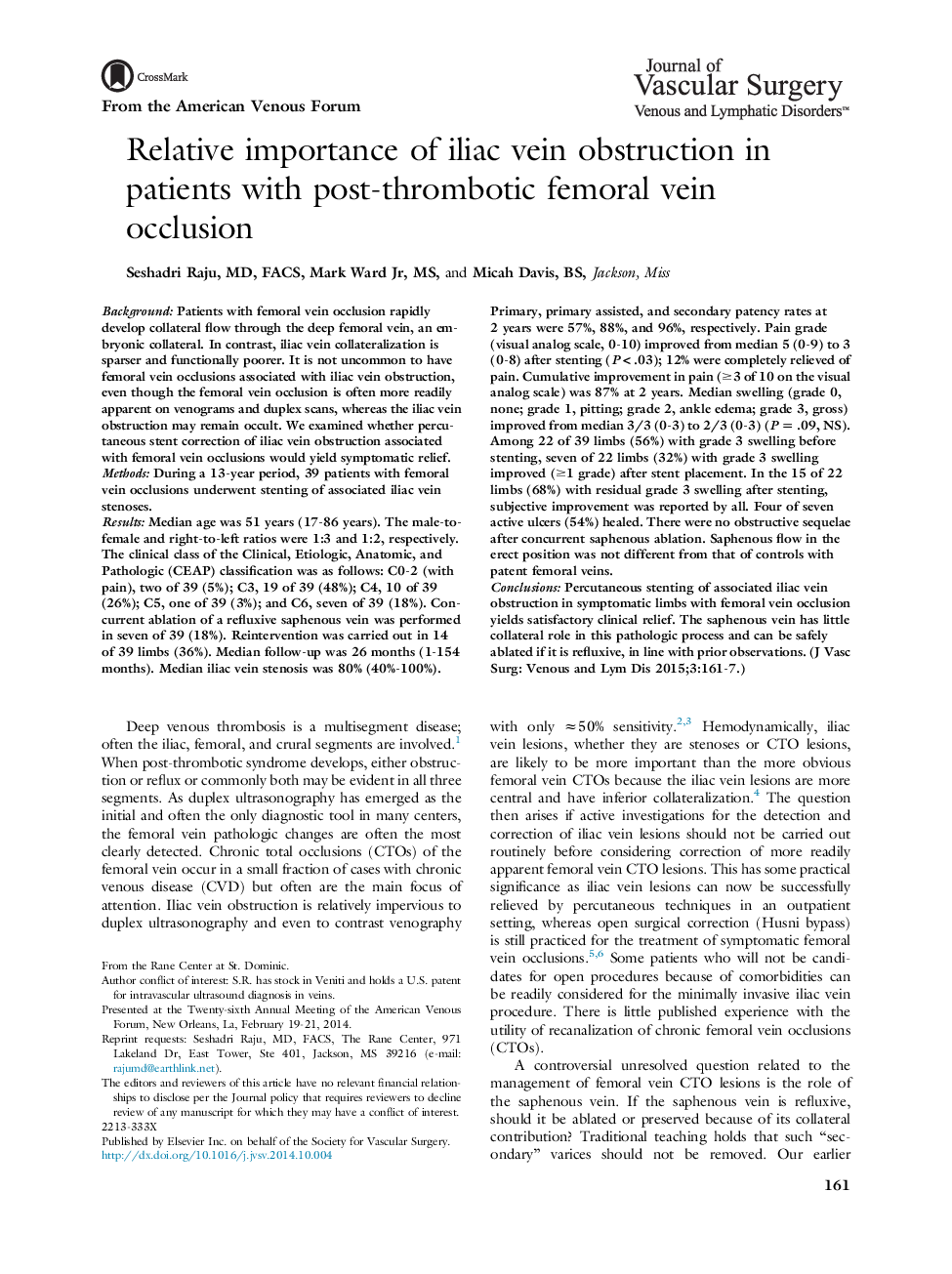| کد مقاله | کد نشریه | سال انتشار | مقاله انگلیسی | نسخه تمام متن |
|---|---|---|---|---|
| 2998020 | 1180220 | 2015 | 7 صفحه PDF | دانلود رایگان |
BackgroundPatients with femoral vein occlusion rapidly develop collateral flow through the deep femoral vein, an embryonic collateral. In contrast, iliac vein collateralization is sparser and functionally poorer. It is not uncommon to have femoral vein occlusions associated with iliac vein obstruction, even though the femoral vein occlusion is often more readily apparent on venograms and duplex scans, whereas the iliac vein obstruction may remain occult. We examined whether percutaneous stent correction of iliac vein obstruction associated with femoral vein occlusions would yield symptomatic relief.MethodsDuring a 13-year period, 39 patients with femoral vein occlusions underwent stenting of associated iliac vein stenoses.ResultsMedian age was 51 years (17-86 years). The male-to-female and right-to-left ratios were 1:3 and 1:2, respectively. The clinical class of the Clinical, Etiologic, Anatomic, and Pathologic (CEAP) classification was as follows: C0-2 (with pain), two of 39 (5%); C3, 19 of 39 (48%); C4, 10 of 39 (26%); C5, one of 39 (3%); and C6, seven of 39 (18%). Concurrent ablation of a refluxive saphenous vein was performed in seven of 39 (18%). Reintervention was carried out in 14 of 39 limbs (36%). Median follow-up was 26 months (1-154 months). Median iliac vein stenosis was 80% (40%-100%). Primary, primary assisted, and secondary patency rates at 2 years were 57%, 88%, and 96%, respectively. Pain grade (visual analog scale, 0-10) improved from median 5 (0-9) to 3 (0-8) after stenting (P < .03); 12% were completely relieved of pain. Cumulative improvement in pain (≥3 of 10 on the visual analog scale) was 87% at 2 years. Median swelling (grade 0, none; grade 1, pitting; grade 2, ankle edema; grade 3, gross) improved from median 3/3 (0-3) to 2/3 (0-3) (P = .09, NS). Among 22 of 39 limbs (56%) with grade 3 swelling before stenting, seven of 22 limbs (32%) with grade 3 swelling improved (≥1 grade) after stent placement. In the 15 of 22 limbs (68%) with residual grade 3 swelling after stenting, subjective improvement was reported by all. Four of seven active ulcers (54%) healed. There were no obstructive sequelae after concurrent saphenous ablation. Saphenous flow in the erect position was not different from that of controls with patent femoral veins.ConclusionsPercutaneous stenting of associated iliac vein obstruction in symptomatic limbs with femoral vein occlusion yields satisfactory clinical relief. The saphenous vein has little collateral role in this pathologic process and can be safely ablated if it is refluxive, in line with prior observations.
Journal: Journal of Vascular Surgery: Venous and Lymphatic Disorders - Volume 3, Issue 2, April 2015, Pages 161–167
